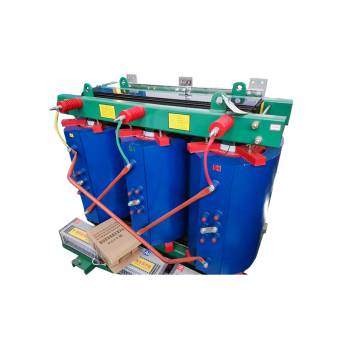Energy-Saving Single-Phase Oil-Immersed Pole-Mounted Transformer
15KVA 13.8KV/0.4KV
See DetailsInsulation resistance is a crucial parameter that directly impacts the performance and lifespan of any transformer. It prevents electrical faults, ensures the transformer operates efficiently, and safeguards both the equipment and surrounding infrastructure. The insulating materials used in both transformer types—epoxy resin for dry-type transformers and mineral oil for oil-immersed transformers—have unique properties that influence their insulation resistance over time, making it essential to understand how they compare in terms of durability, reliability, and maintenance.
Resin dry-type transformers, as the name suggests, rely on a resin-based insulation system. Epoxy resin, the most common material used for encapsulation, offers a number of benefits, including high dielectric strength, excellent moisture resistance, and enhanced thermal stability. The insulation resistance of a resin dry-type transformer is typically very high when new, thanks to the dense and uniform resin coating that effectively isolates the windings from the external environment. Over time, however, exposure to heat and electrical stress can cause minor degradation of the resin, especially in environments with high temperatures or electrical loads. However, resin dry-type transformers generally maintain their insulation resistance for a much longer period compared to their oil-immersed counterparts because they are not susceptible to the same environmental factors, such as oil contamination or leakage. The encapsulation of the windings in resin also reduces the risk of water ingress, a common issue with oil-immersed transformers that can significantly degrade insulation resistance.

In contrast, oil-immersed transformers rely on mineral oil not only for cooling but also for insulation. While the oil serves as an excellent dielectric material when the transformer is new, over time, the insulation resistance can begin to deteriorate due to a variety of factors. First, mineral oil can become contaminated with water, air, or particulate matter, all of which can reduce its insulating properties. Over time, the oil's dielectric strength decreases, and its ability to maintain proper insulation resistance diminishes. Furthermore, exposure to high temperatures, which causes the oil to break down chemically, can accelerate this degradation. In extreme cases, oil leaks can occur, causing the loss of both the insulating medium and the cooling capacity of the transformer. While oil-immersed transformers can be maintained with regular checks and oil filtration systems, the risk of insulation resistance decline over time is inherently higher due to these vulnerabilities.
Another important consideration is the external environment where these transformers are placed. Resin dry-type transformers are more resilient to external factors like moisture and environmental contaminants because of their solid, sealed insulation system. This makes them a better option for installations in harsh or enclosed spaces, such as high-rise buildings, airports, or substations, where exposure to the elements is more controlled. On the other hand, oil-immersed transformers, while effective in larger industrial settings, may struggle in such environments due to the vulnerability of the oil to external contaminants. For example, areas prone to flooding or where airborne dust and moisture levels are high pose a greater risk to the insulation resistance of oil-immersed transformers.
Both types of transformers require regular maintenance, but the maintenance routines differ significantly due to the nature of the insulation materials. For resin dry-type transformers, maintenance often focuses on checking for physical damage to the resin and ensuring that the transformer is free from dust or other potential contaminants. Since the insulation is solid, there is less need for complex oil checks or monitoring of dielectric strength in the same way oil-immersed transformers demand. Conversely, oil-immersed transformers require periodic oil testing, filtration, and oil replacement to ensure that the mineral oil continues to perform as an effective insulating medium. These maintenance procedures are not only more frequent but can also be costly and time-consuming, especially if the transformer is located in an area difficult to access or has been running for many years without proper care.
Contact Us